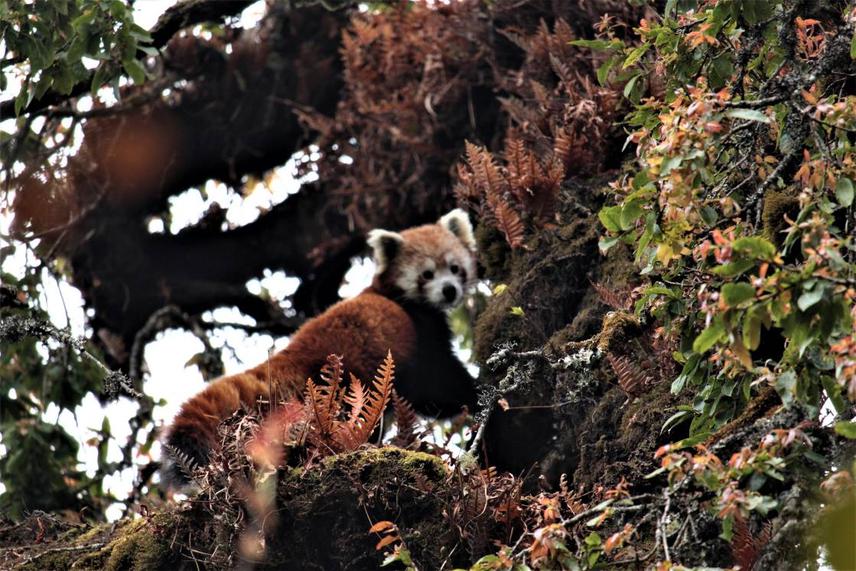Badri Baral
Other projects
18 Jan 2016
Distribution and Status of Red Panda (Ailurus fulgens fulgens Cuvier 1825) in Jajarkot, Mid-Western Nepal
30 Sep 2019
Red Panda Action Plan for Jajarkot: A Bottom Up Approach for Conservation of Endangered Species outside Protected Area
The Local Governments (namely, Barekot, Kuse, and Nalagad) of Jajarkot had previously prepared the first local national Red Panda Conservation Action Plan for Nepal (2021-2025) funded by (Rufford Second Small Grant) which is in line with the Government of Nepal's Red Panda Conservation Action Plan for Nepal (2019-2023) (Baral et al. 2021). This action plan focuses on conducting extensive research using rigorous scientific tools and techniques to understand their ecological and habitat dynamics.

Red panda at its natural habitat, Kuse Rural Municipality. © Badri Baral
Furthermore, it also emphasizes curbing poaching and strengthening local stewardship for red panda conservation. It will also synergize the combined efforts of the Divisional Forests Office, local governments, conservation partners, and local communities to achieve the aim to protect and manage red panda populations in Jajarkot. Involvements of local communities have been well prioritized in this action plan which I believe will be critical in achieving the targeted objectives of this five-year action plan. The proposed project "Linking Citizen Science to turn paper results into red panda conservation outputs in Jajarkot District, Karnali Province, Nepal" attempts to execute the actions proposed in the local red panda conservation action plan (2021-2025).
Due to Covid 19, Nepal is suffering from the risk of economic recession, hence, the local governments failed to manage the funds for the execution of actions proposed in the local red panda conservation action plan (2021-2025), Jajarkot. The execution of this bottom-up approach to red panda conservation planning with a deeper understanding of human-nature interactions in the red panda habitat has been proposed to guarantee the success of top-down conservation planning that has been conducted without taking local socio-economic considerations into adequate account. The execution of these paper works into conservation actions linking citizen science not only supports ongoing community-based red panda conservation activities but also promises to yield a high conservation effect.